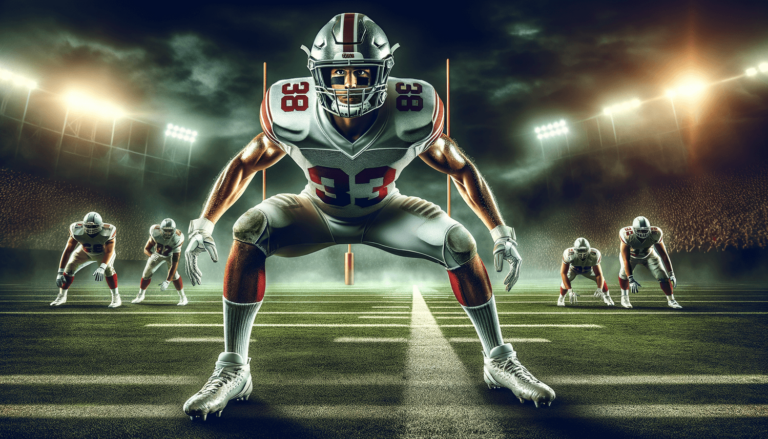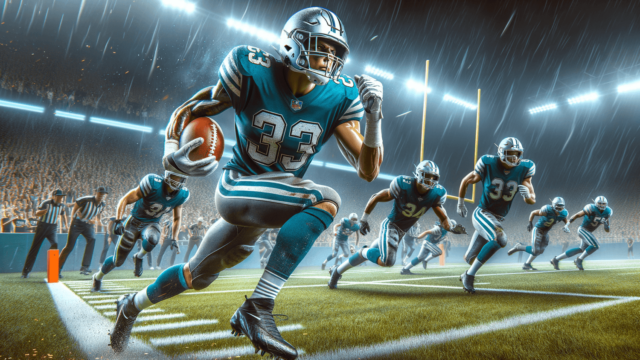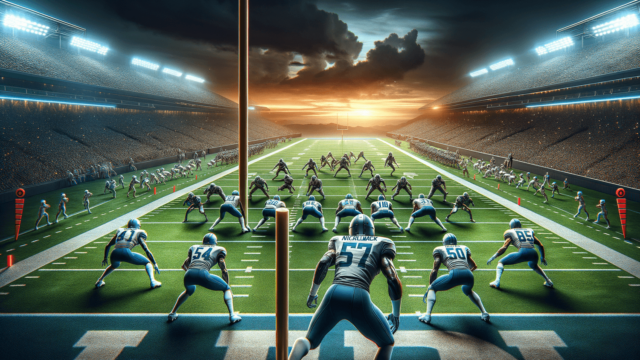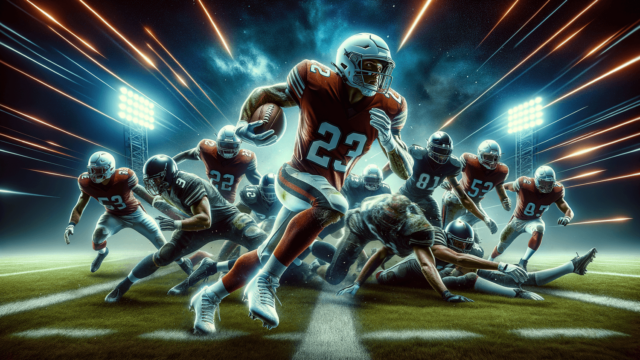
In football, FS stands for Free Safety, a defensive back position responsible for covering the deep part of the field and assisting in tackling receivers or runners.
Understanding the Free Safety (FS) in Football
The Free Safety (FS) is a crucial player in the defensive backfield of a football team. Closely related to football strategy and team dynamics, the FS is a key figure in preventing the opposing team from making long passes and gaining considerable yardage on the field. Let’s dive deeper into the role of the FS in football.
Responsibilities of a Free Safety
The primary responsibilities of an FS are:
- Deep pass coverage: They need to prevent opposing wide receivers from catching deep passes.
- Run support: FS must work in tandem with other defensive players to stop running backs from gaining yardage.
- Play recognition: Identifying the play quickly and reacting accordingly is crucial for an FS.
- Leadership: The FS is typically considered the “quarterback” of the defense, calling out adjustments and communicating with teammates.
Physical Traits of a Free Safety
Size and Speed
A good FS must possess the right size and speed to be able to keep up with wide receivers and quickly close in on running backs. While size isn’t the most important factor for this position, it does play a role in their ability to break up passes or make tackles. However, an FS must prioritize speed to be effective in covering the deep zones.
Agility and Ball Skills
Exceptional footwork and change of direction are essential for an FS. In addition, they need to have good ball skills to intercept passes or break up potential catches and create turnovers.
Notable Free Safeties in Football History
Some of the most outstanding Free Safeties in football history include:
- Ronnie Lott – A Pro Football Hall of Famer and one of the most dominant defensive players in the NFL history.
- Ed Reed – Known for his incredible skills and exceptional playmaking ability, Reed set numerous records during his career.
- Brian Dawkins – A nine-time Pro Bowler and a member of the Pro Football Hall of Fame, Dawkins was a ferocious tackler and a gifted leader.
Key Skills for a Free Safety
A successful FS needs to develop and hone several skills to excel at their position:
- Reading the quarterback: This helps the FS diagnose the play quickly and determine if it is a pass or run, allowing them to react accordingly.
- Instincts and anticipation: An FS with strong instincts can anticipate where the ball is going and position themselves in the best location for pass defense or run support.
- Tackling technique: Effective tackling skills are essential for an FS to prevent big gains in both the passing and running game.
- Communication: A good FS should communicate effectively with their teammates for improved defensive coordination and adjustments when necessary.
Tactics and Schemes Involving the Free Safety
FS is used in various defensive schemes, often adapting to the game situation and the opposition’s style of play. Some of these tactics include:
- Cover 1: In this man-to-man coverage scheme, the FS is the lone deep defender, responsible for providing help to the cornerbacks if they get beaten.
- Cover 2: The FS and Strong Safety (SS) divide the deep zone into halves, becoming the last line of defense in this scheme.
- Cover 3: In this zone coverage, the FS is responsible for the deep middle third of the field, while the cornerbacks cover the outer thirds.
- Cover 4 (Quarters): The field is divided into quarters, with the FS and SS covering one deep quarter each and the cornerbacks covering the other two deep quarters.
Free Safety vs. Strong Safety
The Free Safety (FS) and Strong Safety (SS) positions may appear similar, but they possess distinct roles and responsibilities within a team’s defensive scheme:
- Positioning: The FS is typically positioned on the weak side of the offensive formation (away from the Tight End), while the SS is aligned opposite the strong side (aligned with the Tight End).
- Run support: The SS is often more involved in run support, gearing up to make tackles near the line of scrimmage.
- Coverage responsibility: The FS is primarily focused on deep pass coverage, while the SS is more involved in short and intermediate pass coverage, as well as covering the Tight End in man-to-man situations.
- Physical attributes: The FS is usually leaner and faster, prioritizing coverage skills. The SS is typically more physically imposing, being strong tacklers and providing increased run support.
While there are significant differences between the Free Safety and Strong Safety, both positions require excellent versatility, athleticism, and football IQ to execute their roles effectively.
FAQs About the Free Safety Position in Football
For those who have just read about the FS position in football, you may have some further questions on the details and practicalities of this position. Here are some frequently asked questions and their concise answers:
What is the difference between Free Safety and Defensive Back?
Free Safety is a specific type of Defensive Back. The term Defensive Back is used to describe any player in the defensive secondary, which includes both Safeties (Free Safety and Strong Safety) and Cornerbacks.
What techniques can a Free Safety use to improve their play?
A Free Safety can work on footwork, tackling drills, reaction time, agility exercises, ball skills, and film study to improve their overall performance and effectiveness on the field.
Which other positions does a Free Safety work closely with on the field?
A Free Safety works closely with the cornerbacks, linebackers, and Strong Safety to coordinate the defense against both the pass and run. They also collaborate on pre-snap adjustments and during in-game situations with their defensive teammates.
Do some defensive schemes favor using two Free Safeties instead of a Free Safety and Strong Safety?
Yes, some defensive schemes use two Free Safeties to create a more versatile and balanced secondary. This approach can be mainly seen in college football, where the offense uses a spread formation, requiring both safeties to have similar skill sets in terms of pass coverage and tackling ability.
How do teams identify and scout potential Free Safety talent in college and high school football?
Teams look for a combination of size, speed, athleticism, instincts, tackling technique, and ball skills when evaluating potential Free Safety talent. They also observe factors like leadership, football IQ, and the ability to communicate effectively with teammates during on-field and film study sessions.
Featured Posts
- No pillar pages found.





